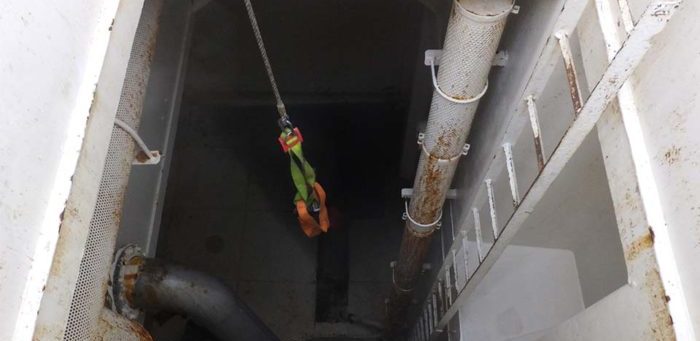The UK MAIB issued a safety bulletin on an enclosed space fatality onboard the fishing vessel ‘Sunbeam’ on 14 August 2018. The investigation highlighted lack of risk assessment and noted that the crew did not appreciate the levels of risk they were taking when entering in a refrigerated salt water tank.
The incident
At about 0900 on 14 August, Sunbeam’s crew arrived at the vessel’s berth ready to begin work. The vessel’s refrigeration plant had been shut down after landing the final catch at Lerwick, and its RSW tanks had been pumped out and tank lids opened in preparation for deep cleaning.
At some time between 1200 and 1350, Sunbeam’s second engineer entered the aft centre RSW tank and collapsed. At about 1350, the second engineer was seen lying unconscious at the aft end of the tank by a crewmate, who immediately raised the alarm.
Three of the vessel’s crew entered the tank and tried to resuscitate the second engineer but they soon became dizzy, confused and short of breath. One of the crew managed to climb out of the tank unaided, the other two crewmen and the second engineer were recovered onto the open deck by two crewmen wearing breathing apparatus.
The two crewmen made a full recovery, but the second engineer could not be resuscitated and died.
Findings
MAIB’s initial investigation identified that the refrigeration plant sea water evaporators had suffered several tube failures resulting in a number of repairs. It is likely that the refrigerant leaked through one or more failed tubes into the seawater system, and was released into the RSW tank.
Freon R22 is four times heavier than air so it will displace oxygen at the bottom of an enclosed space, such as an RSW tank. It is a toxic, tasteless and mostly odourless gas. If it is deeply inhaled, it can cut off vital oxygen to blood cells and lungs.
Safety issues
Lessons learned
- The RSW tanks on board Sunbeam were, by design, enclosed spaces that did not have a fixed means of positive ventilation. Such spaces can become dangerously hazardous to life.
- The atmosphere in the tanks can become oxygen deficient through the effects of corrosion, or toxic through the decomposition of sludge or fish, or, as in this case, the accidental release of gas. Other hazards, such as flooding and heat exhaustion can also be a threat to life. It is the responsibility of vessel owners/operators to ensure that suitable measures are taken to safeguard the crew.
- All work activities should be subject to risk assessment and safe systems of work should be put in place. Working in enclosed spaces is particularly hazardous, and procedures for entering and working in them should be robust and understood. Similarly, rescue plans need to be put in place and fully understood and should be practised.
- Widely recognized safety controls for working in enclosed spaces include:
-Atmosphere testing.
-Provision of positive ventilation.
-Safety sentry at entry point.
-Breathing apparatus available for rescue team.
-Safety harness and means of recovering an unconscious person.
-It is also the responsibility of crew members to behave in a safe manner. This is particularly important when working alone.
This was a tragic accident, which nearly resulted in multiple fatalities. The crew did not appreciate the levels of risk they were taking, even after the second engineer had collapsed.
Recommendations
UK MAIB recommended Sunbeam’s owners to conduct risk assessments specifically for entering and working in RSW tanks and provide safe operating procedures for its crew to follow and appropriate levels of safety equipment to use.
Explore more herebelow:































































